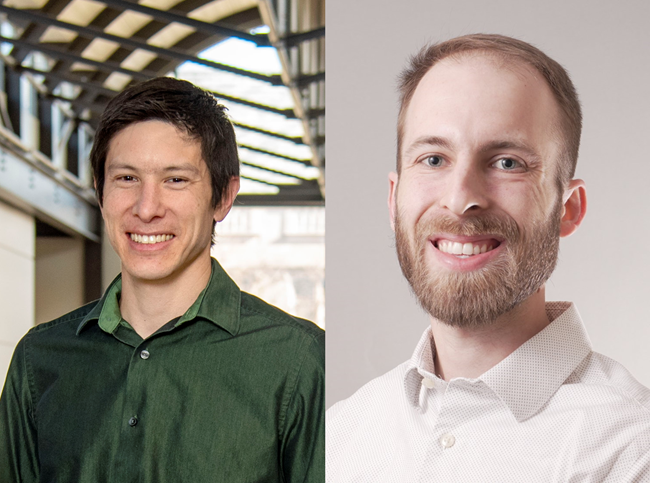Reviewed by Lexie CornerMar 12 2024
In the endeavor to create quantum computers and networks, several components differ from those used today. These parts all have certain limitations, just like a modern computer. Nevertheless, it is not evident what materials can be utilized to build such parts for quantum information storage and transmission.
 Daniel Shoemaker (left) and Zachary Riedel (right). Image Credit: University of Illinois Urbana Champaign
Daniel Shoemaker (left) and Zachary Riedel (right). Image Credit: University of Illinois Urbana Champaign
Professor Daniel Shoemaker of the University of Illinois Urbana Champaign and graduate student Zachary Riedel used density functional theory (DFT) calculations to find potential compounds that could serve as a new platform for quantum memory. Their findings were published in the Journal of the American Chemical Society.
A novel, air-stable material that is a promising contender for application in quantum memory—a device that stores quantum states of photons or other entangled particles without erasing the information they contain—was also created by synthesizing one of the predicted compounds.
The problem that we are trying to tackle here is finding a material that can store that quantum information for a long time. One way to do this is to use ions of rare earth metals.
Daniel Shoemaker, Professor, University of Illinois Urbana Champaign
Due to their distinct atomic structures, rare earth elements—found near the bottom of the periodic table—like europium have shown potential for application in quantum information systems. Specifically, the electrons of rare earth ions are densely packed in close proximity to the nucleus of the atom.
In computing, the excitation of these electrons from their resting state can “live” for a very long period—seconds, hours, or even forever. Rare earth ions are promising candidates for qubits, the basic building blocks of quantum information, and such long-lived states are essential to prevent the loss of quantum information.
Shoemaker added, “Normally, in materials engineering, you can go to a database and find what known material should work for a particular application."
In their quest for potential novel materials, Shoemaker and Riedel established a few guidelines. First, since the ionic configuration Eu3+ functions at the proper optical wavelength, they choose to employ it over the other potential configuration, Eu2+. For materials to be optically “written,” they must be transparent.
Secondly, they were looking for a material composed of additional elements with a single stable isotope. Multiple isotope elements combine distinct nuclear masses that vibrate at somewhat different frequencies, scrambling the information being stored.
Third, to reduce accidental interactions, they desired a wide gap between individual europium ions.
If there were no distinction between the massive clouds of europium electrons, they would behave more like a forest canopy than like evenly spaced suburban neighborhood trees, with the rustle of one tree softly interacting with the leaves of another.
Using those guidelines, Riedel created a DFT computational screening to forecast the potential formation of different materials. After this screening, Riedel found new options for Eu compounds and went on to synthesize the top recommendation on the list, the double perovskite halide Cs2NaEuF6.
Being air-stable, a crucial characteristic for scalable quantum computing, allows this novel chemical to be integrated with other parts. DFT calculations also indicated several additional possible compounds that are yet to be unsynthesized.
Shoemaker concluded, “We have shown that there are a lot of unknown materials left to be made that are good candidates for quantum information storage. And we have shown that we can make them efficiently and predict which ones are going to be stable.”
Daniel Shoemaker is also affiliated with the Illinois Quantum Information Science and Technology Center (IQUIST) at UIUC and the Materials Research Laboratory (MRL).
Zachary Riedel is now a postdoctoral researcher at the Los Alamos National Laboratory.
The US Department of Energy, Office of Science, and National Quantum Information Science Research Center Q-NEXT funded this study. The National Science Foundation, through the University of Illinois Materials Research Science and Engineering Center, provided funding for the utilization of facilities and instrumentation.
Journal Reference:
Riedel, Z. W and Shoemaker, D. P., et. al. (2024) Design Rules, Accurate Enthalpy Prediction, and Synthesis of Stoichiometric Eu3+ Quantum Memory Candidates. Journal of the American Chemical Society. doi:10.1021/jacs.3c11615.